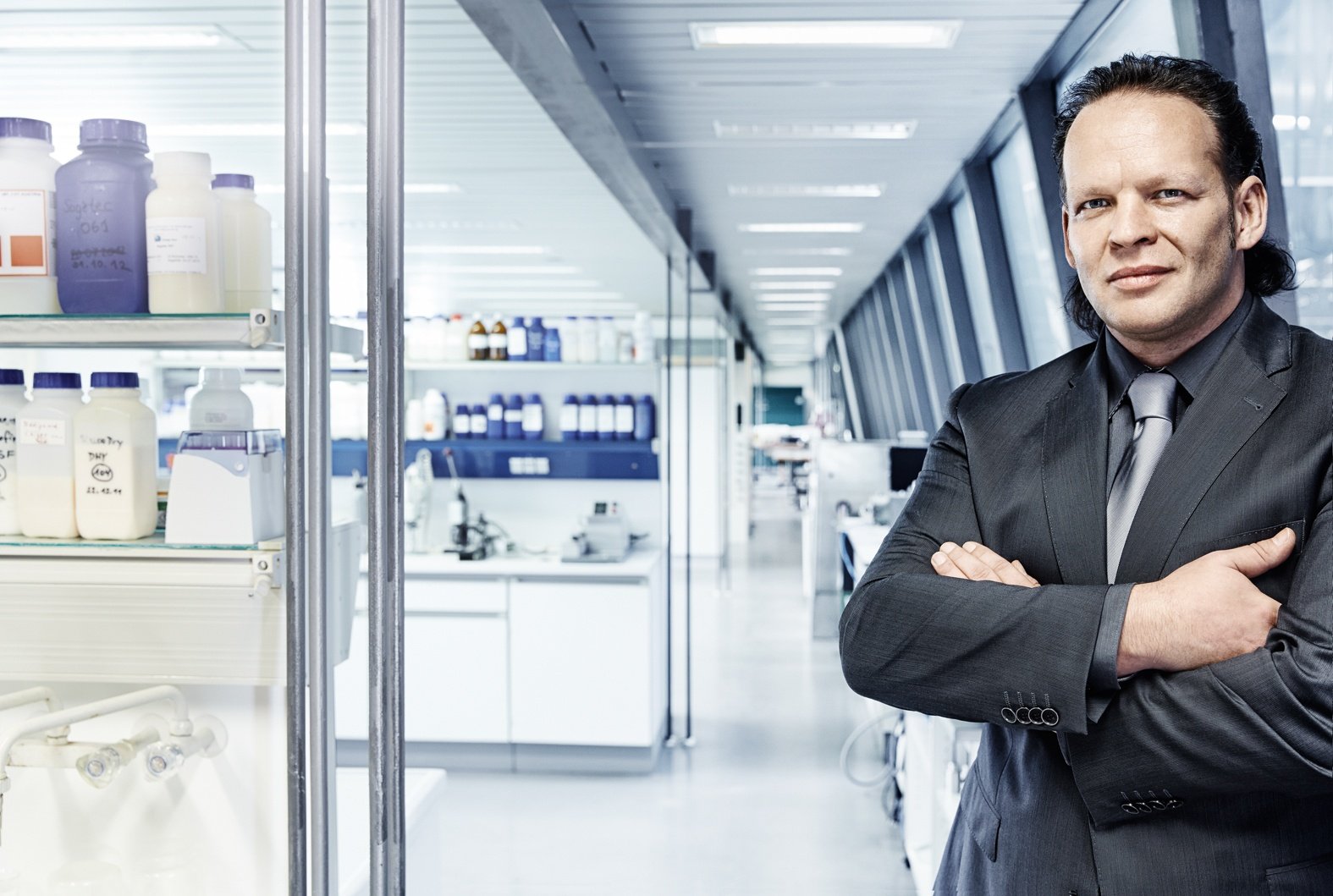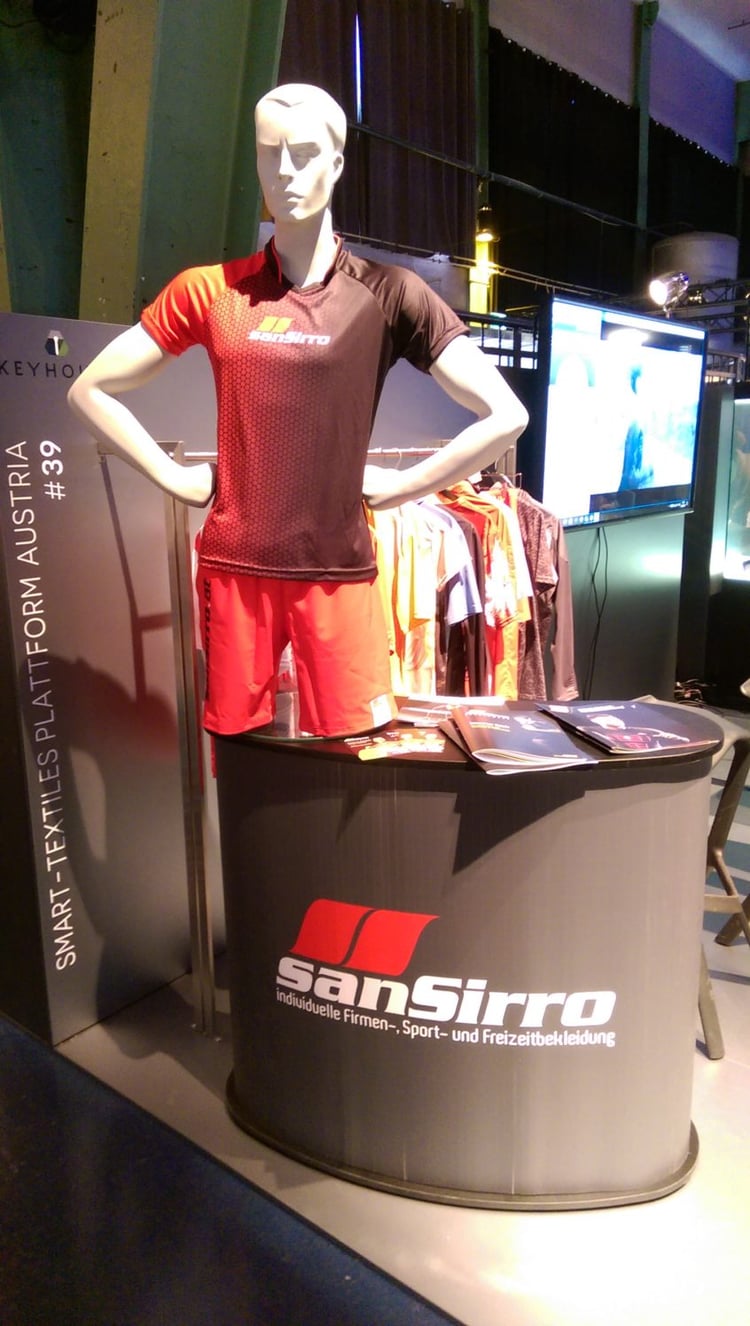Interview: Why Vorarlberg is the global hub for Smart Textiles
Knitted power storage devices, textile implants that take the fright out of heart surgery or embroidered warning systems that inform residents and emergency services before a roof collapses under too much snow load - all these things have one thing in common.

The idea, the concept, the prototype and often also the finished product come from Vorarlberg. Why this is no coincidence is explained by Günter Grabher, co-founder of the Smart Textiles Platform, who with his Grabher Group also takes care of the further development of the topic himself.
Lead: Smart Textiles is a buzzword that is now appearing more and more frequently in the media. But what exactly can one imagine by this?
Günter Grabher: The possible field of application is huge. I may give you a few examples of projects the Smart Textiles platform and its partners are involved in. Together with Prof. Dr. Werner Mohl from the Medical University of Vienna, we are working on a textile-based implant that will revolutionize heart surgery. In short, the "Mitral Butterfly" makes it possible to avoid very risky open-heart surgery. Another project involving the Smart Textiles Platform is the start-up Texible. The company from Hohenems has developed a knitted power storage system and last year won the futurezone Award Start-up of the Year. The "Snow Load" project developed by the Smart-Textiles platform partner Kapsch won third place in the Smart City Dornbirn competition on 23 February 2018. Thanks to textile sensors, it is possible to measure the snow load on roofs. This data is then transferred to the Kapsch cloud. If the permissible limit is exceeded, the system automatically notifies the residents and emergency services. And there are many other current projects and applications that show the wide variety of possible fields of application for Smart Textiles.
Lead: That's probably why you attended the world's largest consumer electronics fair, the CES 2018 in Las Vegas.
Grabher: This year the Grabher Group and the company SanSirro as well as two other companies from Austria were represented there. We presented a smart shirt that can measure vital data and slipped into their official video at CES. The interest in our system was accordingly high and Austria reached 7th place in the ranking of the most innovative countries at the CES. Many TV teams searched the fair for Austrian projects but unfortunately only found three.

Lead: You are one of the initiators of the Smart Textiles platform. What are the objectives of this initiative?
Grabher: To answer this question, I have to go back a little. The textile industry had to face globalisation very early on. It has always been a threshold industry that moved to where production costs were lowest. The textile industry in Vorarlberg was therefore forced to design highly automated systems. Digitalization, in which everything is networked, is therefore anything but new for the textile industry. In Vorarlberg there are 55 textile industry and about 150 embroidery companies. 50 percent of them are active in the technical field. This composition is absolutely unique worldwide and the Vorarlberg site knows how to produce textiles. However, Smart Textiles require a great deal of know-how from areas outside the industry, such as toolmaking or plastics technology. If a textile company wants to implement Smart Textiles alone, then the product will have weaknesses in terms of electronics and sensor technology. An electronics company, on the other hand, will not be able to do the textile part so well. It is therefore only possible to develop Smart Textiles if companies from the various sectors cooperate. The Smart Textiles platform now wants to bring these industries together so that they can find a common language at all. This is the prerequisite for developing joint projects. Recently the Textile Competence Center Vorarlberg (tccv) was founded in Dornbirn. The Competence Center is an institution of the University of Innsbruck and therefore closely associated with the Research Institute for Textile Chemistry and Textile Physics. The Smart Textiles Platform, which currently has 60 members and is the world's largest organization in the field of Smart Textiles, is also part of this competence center.
Lead: And what makes the Smart Textiles platform concrete?
Grabher: The initiative has been around for 10 years now. Finding this common language was not easy, but now we are more or less ready. The platform initiates innovation processes and accompanies them until they become cooperative research projects. Over the last five years, we have generated about 10 million euros in research funds that have been used for various projects. The Smart Textiles platform also ensures that the partner companies are not only represented at textile fairs, but also at trade fairs outside the industry. For example, at the CES in Las Vegas, as mentioned earlier.
Lead: It is not particularly far from Vorarlberg to Switzerland or Germany. What about cross-border cooperation?
Grabher: We maintain a close cooperation with Bayern Innovativ, Gesellschaft für Innovation, Technologie- und Wissenstransfer in Bayern. We started there with textile topics, but meanwhile the cooperation extends to many other areas. We cooperate similarly closely with Swiss Textiles, the professional association of the textile industry in Switzerland. We also work together with the platform for digital initiatives from Dornbirn, whose members mainly come from IT. This year we are organizing a hackathon with the main focus on textile sensor technology. The participants travel across Lake Constance for 48 hours on a ship and build executable prototypes from a starter kit consisting of textile sensor components.
Lead: What are the advantages of the Vorarlberg location in the development of innovations in the field of textiles?
Grabher: Vorarlberg is the only region in the world where the entire textile chain is present. This is exactly what is necessary in the development of innovations. This unique selling point attracts experts from all over the world to Vorarlberg. The developers of Project Jacquard by Google and Levi's have found the basic material for the smart jeans jacket in Vorarlberg. Without Vorarlberg, the Amazon language assistant, Alexa, would not speak as he does. Because the technology for acoustics also comes from the Ländle. At the second edition of the Smart Textiles trade fair Saltex, which will take place from 12 to 13 September in Dornbirn, a Microsoft expert will give a keynote speech on the subject of knitting technology as a key technology. There is a lively exchange on this topic with MIT. When it comes to Smart Textiles, you can no longer get past Vorarlberg. Companies from all over the world are enticing our people away. Austria is an absolute international leader in this field, a true unique selling point. The stroke for Smart Textiles is right here.
Lead: How did the state manage this feat?
Grabher: 40 years ago, 70 percent of the workforce was employed in the textile industry. Globalization has changed that. Mechanical engineering has always been strongly represented in the Rhine Valley. The first automated and electric machines for the textile industry were designed here. It was obvious that the textile industry would then settle in the vicinity of mechanical engineering. Vorarlberg has maintained this technological lead to the present day. The upturn in the industry could not have been achieved with a local workforce. When the growth of the textile industry ended, the metal industry took over. Today, only five percent of Vorarlberg's employees still work in the textile industry. There have never been any problems with jobs in Vorarlberg. The big players from the mechanical engineering and metal industry, such as Doppelmayr or Blum, have always needed manpower.
Lead: Back to the textile industry. Do you believe that robots are increasingly being used in textile production and that production is thus returning to Europe, because the advantage of low production costs will no longer apply?
Grabher: In textile production, certain processes can only be manufactured by hand. This requires feeling in the fingers and robots do not have this. If a robot holds a sheet of paper between its fingers and you pull on it, then it does not notice it because it does not feel it. Ten years ago, a major automobile manufacturer tried to have leather steering wheels sewn by machines. This attempt failed. There are Austrian textile producers who try to let robots handle certain processes. But continuous production is not possible. Rather, robots have opened up a new market for the textile industry.
Lead: What do you mean by that?
Grabher: A robot still has the problem of having to work in a cage, i.e. a locked room. Because a direct cooperation with people, a production hand in hand, so to speak, is impossible. Because a robot can't handle a collision with a human. Smart Textiles Platform is now developing tailor-made suits for robots in cooperation with the Technical University of Vienna, in which a pressure sensor system is integrated. This would allow a robot to feel a collision with a human being through its"skin". The aim of the project is in any case to eliminate the enclosures for robots.
Thank you for the interview!











